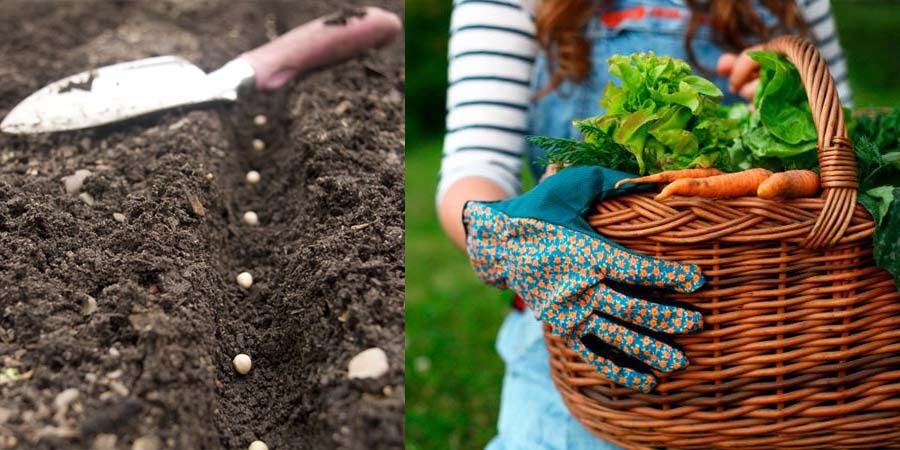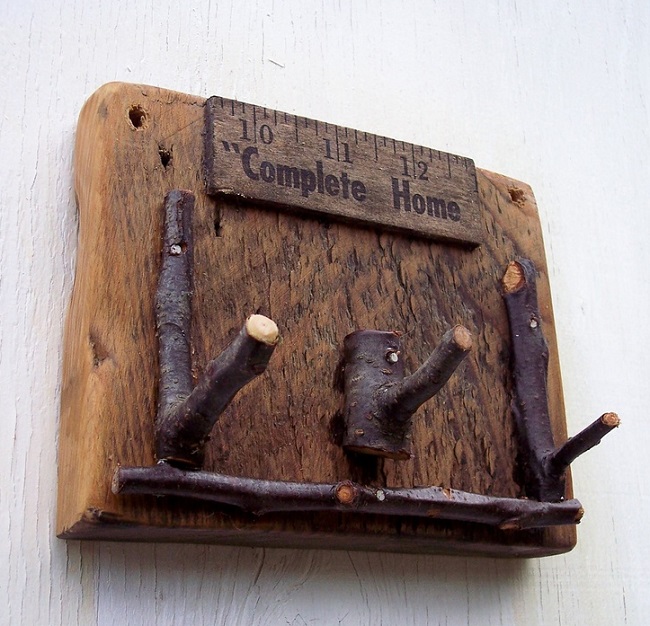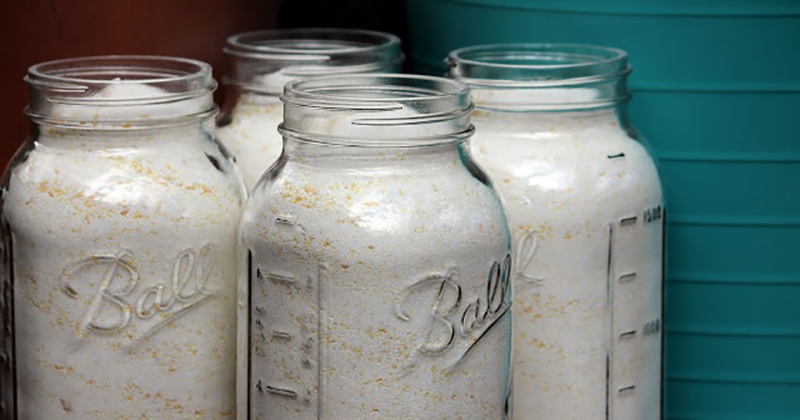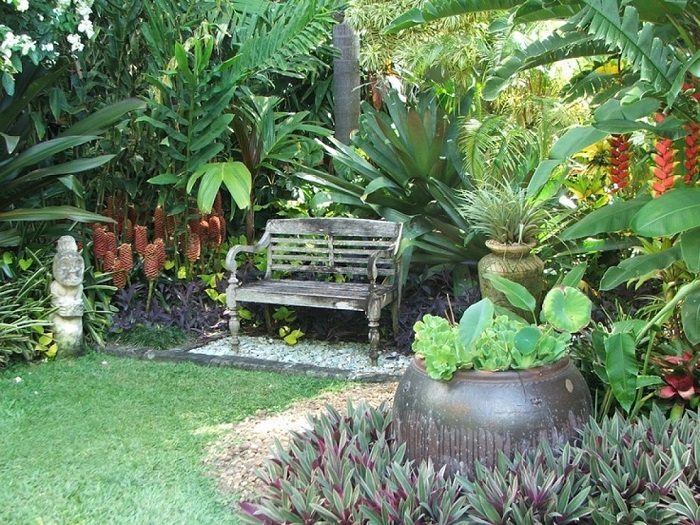Composting is a gardener’s magic. It has the power to transform vegetable peels into nutrient-rich soil and help plants grow. It is also relatively simple to do, despite the complex processes required to make this happen.

There are endless ways you can use the final product. However, the most common problem is that there is rarely enough compost for everyone. That is why the way you use it is very important.
What does the finished compost look like?
Always keep in mind that using compost before it is ready can attract pests and damage garden plants. It could also steal nutrients from the soil, making these same nutrients unavailable to the plants in your garden.
To make sure your compost is ready to use, grab a handful and take a look. Mature compost has the following characteristics:
- A texture that crumbles and is smooth. Depending on what you add to your compost pile, there may also be woody or fibrous pieces. But there should be nothing recognizable, such as intact husks or leaves. A few avocado pits or corn on the cob are normal, as these take longer to break down. Remove them from your finished compost.
- A fragrant, sweet, clayey smell, like a forest on a humid day. Traces of ammonia or sour odors indicate that your compost takes longer to mature.
- A dark color. They don’t call it ‘black gold’ for nothing.
When mature, your compost pile will shrink by about a third of its original amount. The overall pile temperature will be within 5 ° C of the outside temperature. (A pile that is hot in the center means it still works.)
How long does compost take to mature?
The rate at which organic matter decomposes depends on three things:
- The size and type of organic matter added to your pile. Chopped and shredded material decomposes faster than whole material. A correct ratio of carbon-rich brown ingredients to nitrogen-rich green ingredients will also accelerate breakdown.
- How often do you turn your pile while it is composting? Turning a pile improves aeration and helps move larger pieces to the center where they will break down more quickly. A rotating compost bin makes this process quick and easy.
- If you are using a hot or cold composting method. Hot composting, while requiring more work to monitor and set up, will break down food waste faster than cold composting. In hot composting, it’s easy to tell when the compost was made. The temperature of the pile decreases and it does not heat up again when it is turned over.
Hot compost works best with shredded materials and a 30-to-1 carbon to nitrogen ratio. Spinning bins can function as hot composters because their sealed design helps conserve heat and mix hot composting material with new materials.
Depending on the factors above, it can take anywhere from four weeks to 12 months for your compost to break down completely. If you are using a compost bin, you will have compost ready to use in three weeks to three months.
Benefits of using compost in the yard and garden.
Once your compost is ready to use, add it to your soil at any time of the year to get the following benefits:
- Better moisture retention –Compost fortified soil holds more water for longer periods. You will have to water your garden less frequently, saving time and money.
- Better Soil Structure –More organic matter in your soil means there will be more pockets of air for water and nutrients to move unhindered.
- Improved Nutrient Levels –Compost is high in the ‘big three’ nutrients garden vegetables need: nitrogen, phosphorus, and potassium. It also contains trace elements such as calcium, magnesium, iron, and zinc.
- Balanced soil pH: Adding compost prevents your soil from becoming acidic or alkaline.
- Healthy Natural Soil Organisms –Creatures like worms and soldier flies feed on compost ingredients. They also help your garden.
Don’t worry about killing plants or polluting nearby waters. The finished compost does not carry these risks. But while just adding a few inches of compost is good for your garden, there are some ways to get even more benefits from your compost.
Top 10 Uses of Finished Compost.
Once we have at our disposal the compost that could have cost us so much work to get, we cannot use it inappropriately, for this we must know how to use the compost in an intelligent way.
1. Use as a mulch.
Compost mulch is a great way to improve your garden’s harvest. It is naturally absorbent and dense, and applied to the soil surface will prevent evaporation when placed over drip irrigation or after irrigation. It will also prevent weeds from sprouting. Apply in an 8 to 15 cm layer and rake until smooth.
2. DIY potting soil mix.
The finished compost is an excellent addition to homemade potting soil. Remove large debris by passing your compost through a 1.5 to 2.5 cm wide soil sieve. Make a mixture with the following proportions:
- 1 part compost.
- 1 part vermiculite.
- 1 part of topsoil.
3. Make compost tea.
Have you ever wondered how to get the benefits of compost directly into the roots of your plant? Soaking your compost in a liquid emulsion is one way to concentrate the nutrients and make them easier to absorb. Research and learn how to make compost tea and reap the benefits of your work even more!
4. Feed the fall perennials.
Add 2 to 4 cups of compost to the hole where you will plant your fall perennials. This will feed your plants and help extend their flowering time. Adding a little compost to your digging hole locks in moisture and gives the plant extra energy for vigorous, healthy growth.
Compost is a key factor in regenerative gardening and allows us to proceed without fertilizer seeping into our water table. Healthy soil benefits not only the plant, but vital organisms that help our ecosystem.
5. Feed the spring bulbs.
Now is also the time to plant your bulbs for spring. Add compost to the planting hole to help recently divided bulbs. This will give them a great help when they come out of winter dormancy.
6. Spread it on new or established lawns.
Fall brings the best weather for planting and maintaining lawns. Add a 1 to 2-inch layer of compost on top of your lawn in the weeks before planting. This will improve the tillage of your soil and provide the nutrients your seeds need to thrive.
7. Fertilize garden beds.
Twice a year we should give our raised beds a good dose of finished compost. We have to spread it across the surface of the soil, and soon the seasonal rains bring the nutrients down to the root level. The worms do the rest of the work, dragging the organic matter into the soil.
8. Add compost to fruit trees.
Fruit trees are best fertilized in early spring before buds open. Make sure to save some of your finished compost for the growing season if you generally harvest in the fall.
If you miss this opportunity, applying compost between March and July can still help your trees. You can also use it as a mulch at any time of the year. Compost is rich in nitrogen, a favorite of fruit trees, along with many micro- and macronutrients.
9. Feed container plants.
When renewing the soil around your potted plants outdoors or transferring them to larger pots, add sifted compost to boost their growth. Mix it with potting soil and / or peat for better absorption.
10. Grow melons, tomatoes, eggplants, cucumbers, and squash.
These plants need a lot of food and a lot of nitrogen to produce. That is why it is not uncommon to see pumpkin plants planted directly into a compost pile. Add compost to the planting holes when transplanting these seedlings to the garden. Fertilize multiple times during the growing season for best results.








